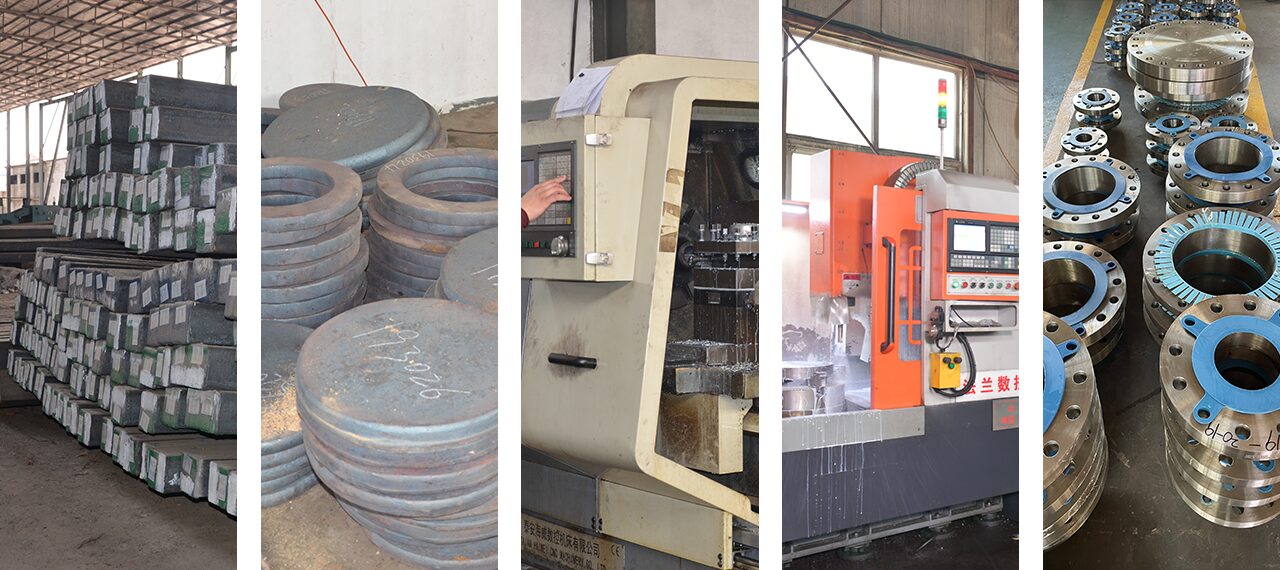Share this
Production Process:
1. Raw Material Preparation: Select appropriate materials, typically metals such as carbon steel, stainless steel, etc., and determine material specifications and quality standards based on application requirements.
2. Processing and Forming : Through forging, casting, machining, etc., shape the raw materials into the desired form of flanges, including outer diameter, inner diameter, bore size, etc.
3. Precision Control : Strictly control the dimensions, surface finish, etc., during the processing to ensure compliance with design requirements and relevant standards.
4. Heat Treatment : Subject the flanges to heat treatment processes like annealing, normalizing, quenching, etc., to improve mechanical properties and corrosion resistance.
5. Surface Treatment : Treat the surface of flanges through methods such as pickling, polishing, coating, etc., to enhance corrosion resistance and aesthetics.
6. Marking and Printing : Print relevant identification information on the flanges, including material, dimensions, pressure ratings, standard numbers, etc., as per requirements.
7. Final Inspection : Perform comprehensive inspection on finished flanges, including visual inspection, dimensional checks, chemical composition analysis, mechanical property testing, etc., to ensure product quality meets requirements.
Inspection Procedure:
1. Visual Inspection : Check for surface defects such as cracks, porosity, inclusions, etc., to ensure visual quality meets standards.
2. Dimensional Measurement : Use measurement tools such as micrometers, calipers, etc., to measure dimensions of flanges including diameter, thickness, bore size, etc., ensuring compliance with design requirements.
3. Chemical Composition Analysis : Conduct chemical analysis to verify the material composition of flanges, ensuring compliance with relevant standards and specifications such as ASTM, ASME, etc.
4. Mechanical Property Testing : Perform tests such as tensile, compression, hardness, etc., to evaluate mechanical properties like tensile strength, yield strength, elongation, etc.
5. Pressure Testing : Install flanges on test equipment and apply design pressure to check sealing performance and pressure resistance, ensuring no leakage or deformation under working conditions.
6. Non-Destructive Testing : Employ methods such as ultrasonic testing, magnetic particle testing, etc., to perform non-destructive testing on flanges, detecting internal defects and ensuring product safety and reliability.
7. Identification Confirmation : Verify the identification information on the flanges matches the actual product, including material, dimensions, standard numbers, etc.
8. Document Review : Review production documents and inspection records to ensure compliance with relevant standards and specifications, generating corresponding quality assurance documents.

